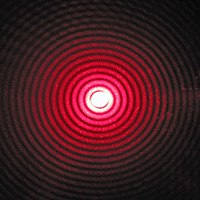
Photo from wikipedia
We propose a novel intensity diffraction tomography (IDT) reconstruction algorithm based on the split-step non-paraxial (SSNP) model for recovering the 3D refractive index (RI) distribution of multiple-scattering biological samples. High-quality… Click to show full abstract
We propose a novel intensity diffraction tomography (IDT) reconstruction algorithm based on the split-step non-paraxial (SSNP) model for recovering the 3D refractive index (RI) distribution of multiple-scattering biological samples. High-quality IDT reconstruction requires high-angle illumination to encode both low- and high- spatial frequency information of the 3D biological sample. We show that our SSNP model can more accurately compute multiple scattering from high-angle illumination compared to paraxial approximation-based multiple-scattering models. We apply this SSNP model to both sequential and multiplexed IDT techniques. We develop a unified reconstruction algorithm for both IDT modalities that is highly computationally efficient and is implemented by a modular automatic differentiation framework. We demonstrate the capability of our reconstruction algorithm on both weakly scattering buccal epithelial cells and strongly scattering live C. elegans worms and live C. elegans embryos.
Journal Title: Optics express
Year Published: 2022
Link to full text (if available)
Share on Social Media: Sign Up to like & get
recommendations!